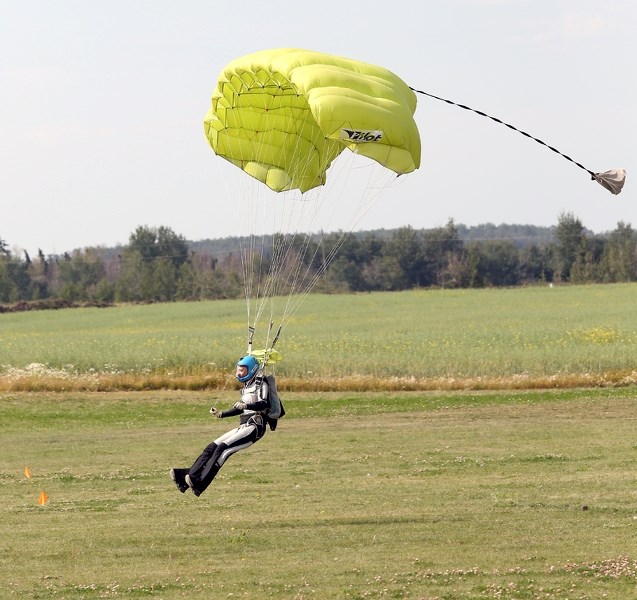Although there was no air show as part of this year’s festivities, the Westlock Flying Club’s annual fly-in breakfast on Aug. 11 was still a success.
“It turned out fairly well,” said club president George Hertz-Kleptow.
The lack of an air show had an impact on the turnout, he said, with only 27 planes flying in. That was down from more than 40 planes at last year’s event.
On the other hand, the club sold about 150 plates during the breakfast, representing close to 170 people, Hertz-Kleptow said, which is a “pretty good average” for a fly-in breakfast.
A wide variety of planes and other aircraft made an appearance, encompassing numerous single-seaters and a few larger craft capable of carrying up to four people. There was also an R22 Beta II helicopter on site.
One of the highlights was a pair of Burt Rutan-designed, rear-engine, canard-style planes. Rutan is an American aerospace engineer who is known for designing light, strong, unusual-looking and energy-efficient aircraft, including Voyager, the first plane to fly around the world without stopping or refueling
One of those Rutan-designed planes belonged to Sherwood Park’s Ed Andrews, who explained a canard-style airplane has a smaller set of wings in front of the main wings; that smaller set performs the same duties as the tail wings do on a conventionally designed plane.
Andrew’s plane was a Long-EZ, which he built himself out of foam and fibreglass using a set of plans instead of a kit. It’s a very efficient aircraft because both sets of wings provide lift, he added.
“It’s one of the most efficient plan-built planes out there,” he said.
The Long-EZ is a different animal when it comes to the flying experience, Andrews said. Because the engine is mounted on the rear, the propeller is running through disturbed air, giving the plane a different sound when in the air.
In addition, he said it handles a bit differently than conventional planes — its roll is similar, but it is very sensitive to pitch.
Andrews said he always wanted to fly, and tried to get into it professionally, but that dream didn’t come true because he was too tall.
Instead, he got into it on the amateur level, building model planes and working up to his pilot’s licence.
He added he got into building the Long-EZ in part because it’s not easy or cheap to buy prebuilt efficient airplanes.



